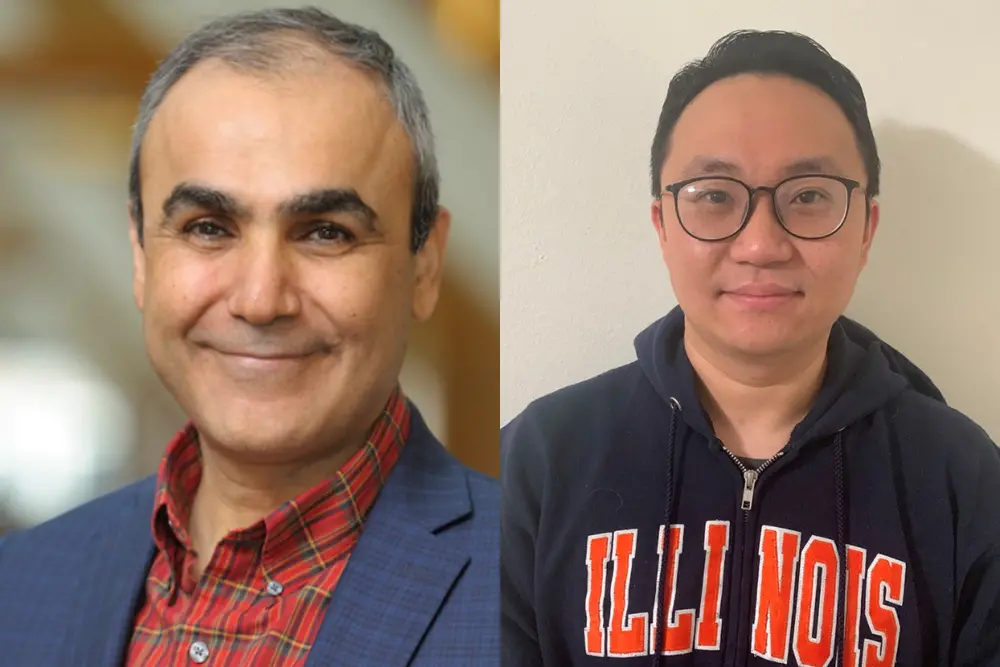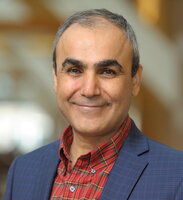
University of Illinois Urbana-Champaign researchers Emad Tajkhorshid and Hyun Park In collaboration with scientists from Argonne National Laboratory, the University of Illinois at Chicago, and the University of Chicago, have used AI to identify new materials for carbon capture.
Carbon capture is a critical technology in reducing greenhouse gas emissions from power plants and other industrial facilities. But a suitable material for effective carbon capture at low cost has yet to be found. One candidate is metal-organic frameworks, or MOFs. This porous material can selectively absorb carbon dioxide.
Metal-organic frameworks have three kinds of building blocks in their molecules — inorganic nodes, organic nodes, and organic linkers. These can be arranged in different relative positions and configurations. As a result, there are countless potential MOF configurations for scientists to design and test.
To speed up the discovery process, researchers from the Beckman Institute for Advanced Science and Technology at UIUC, U.S. Department of Energy’s Argonne National Laboratory are following several pathways. One is generative artificial intelligence to dream up previously unknown building block candidates. Another is a form of AI called machine learning. A third pathway is high-throughput screening of candidate materials. And the last is theory-based simulations using a method called molecular dynamics.
Designing MOFs with optimal carbon selectivity and capacity is a significant challenge. Until now, MOF design has relied on painstaking experimental and computational work. This can be costly and time-consuming. By exploring the MOF design space with generative AI, the team was able to quickly assemble, building block by building block, more than 120,000 new MOF candidates within 30 minutes. They ran these calculations on the Polaris supercomputer at the Argonne Leadership Computing Facility. The ALCF is a DOE Office of Science user facility.
“The study demonstrates the great potential of using AI-based approaches in molecular sciences," said study coauthor and Beckman Institute researcher Emad Tajkhorshid, who is also a professor and the J. Woodland Hastings Endowed Chair of Biochemistry at Illinois. "We hope to extend the scope of the approach to problems such as biomolecular simulations and drug design.”
The researchers then turned to the Delta supercomputer at Illinois to carry out time-intensive molecular dynamics simulations, using only the most promising candidates. The goal is to screen them for stability, chemical properties and capacity for carbon capture. Delta is a joint effort of Illinois and its National Center for Supercomputing Applications. The team’s approach could ultimately allow scientists to synthesize just the very best MOF contenders.
"I believe the key to making successful molecule targets, whether they are MOFs or biomolecules, [is a] tight marriage of [a] diverse set of old and new techniques," said first author Hyun Park, a graduate research assistant at the Beckman Institute. "In addition to contributing my expertise in biophysics and AI, I am glad I had hands-on experience working with different scientists on MOF project, merging many fields of science. With such transferable skills I acquired, I aim to develop novel [drugs] throughout my career as a researcher.”
Photo caption: Biochemistry professor Emad Tajkhorshid (left) and graduate research assistant Hyun Park (right).
